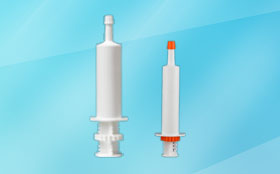Jan. 11, 2021
Dairy cow mastitis is a common, complex disease that causes the most serious economic losses in the dairy industry. It not only severely affects the useful life, milk production and quality of dairy cows, but also is harmful to food hygiene and human health. In particular, recessive mastitis occurs during the dry period, which can easily cause a serious decline in milk cow's lactation during the peak period of postpartum lactation. Therefore, the dry period of cows is an important period for preventing mastitis and an important link in controlling mastitis.

Cefquinome is a product developed by the German Hechst Company. It is the only animal-specific drug among the latest fourth-generation cephalosporin antibiotics. The drug was first approved for marketing in 1993. Because Cefquinome has a wide range of powerful bactericidal effects and low drug resistance, it has been successfully applied to: dairy cow mastitis; pig and bovine respiratory infections caused by Pasteurella, parahaemophilus, and streptococcus; sow udders Inflammation-metritis-agalactia syndrome; sepsis; skin and soft tissue infections and other diseases. Tests have shown that by treating cow mastitis with cefquinoxime, the drug can quickly penetrate into deep breast tissue and reach an effective concentration level in the diseased milk area. The cure rate and effective rate are higher than similar drugs.
At present, cefquinome is mainly in the form of liquid injection, and the packaging is mostly bottled or prefilled syringe packaging. Prefilled syringe packaging is widely used abroad. This type of packaging has the dual functions of drug container and infusion, and has the advantages of convenient use, low residue, and less pollution. Some large domestic veterinary drug companies have gradually adopted this type of packaging and have achieved good results. Market response.
When ceftquinome is applied, it is necessary to thoroughly clean the nipple and edges with a suitable disinfectant before administration, and forcefully empty the milk in the infected breast compartment. Insert the veterinary syringe into the milk tube, gently and continuously push the plunger of the syringe and massage the breast to make the medicine evenly dispersed in the milk chamber. The 5ml cow mastistis syringe is for one-time use only and repeated use is prohibited.
 冀ICP备11016487号-1
冀ICP备11016487号-1